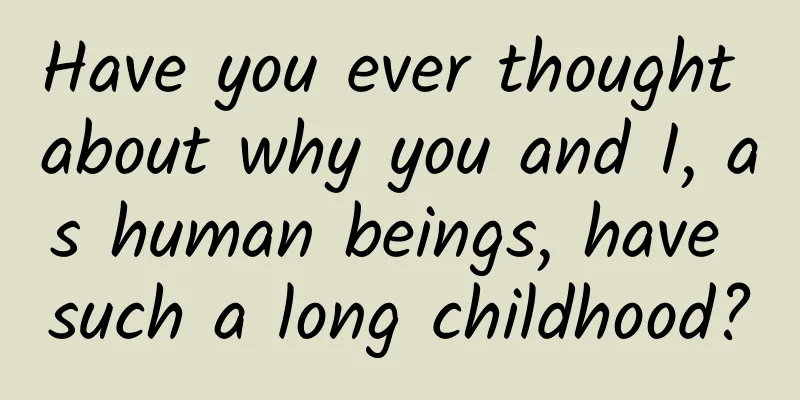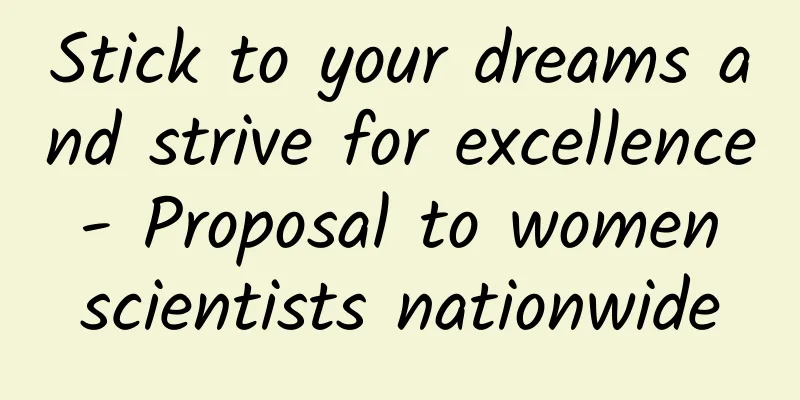Have you ever thought about why you and I, as human beings, have such a long childhood?

|
Leviathan Press: This question has troubled me for many years: Why does it take so long for human babies to grow up? You know, according to the average childbearing age, the stage when they need the most care and nurturing is also the golden age of parents: their intelligence, experience, and creativity have reached their peak, but they need to spend a lot of energy to take care of their children at this time... No matter how you look at it, it is too counterintuitive, it seems like a bug in evolution. Apparently, anthropologists are more confused about this than I am. The average human being spends at least a quarter of their life growing up. That’s actually absurd when put into context in the animal kingdom as a whole. Even the longest-lived mammals, whales, spend only about 10 percent of their lives growing into giants. No other primate species does this, but then again, no primate has managed to dominate the Earth as successfully as we have. Could it be that the secret to our species' success is that we grow up slowly? If so, what might the evolutionary advantage of delaying adulthood be? And what does it mean for the future of our species? The search for the secrets of our success is at the heart of anthropology - the study of humans and their place in the world. This most narcissistic of disciplines, riding the wave of European colonial expansion and the growing popularity of "natural laws" in the 18th century, explained the workings of the world in unchanging terms. Truths could be discovered by anyone with the intelligence and patience to observe them in nature (and that was largely open to men). Early anthropology brought together cultures and set them on a line of progress, from fossils to dress, identifying the most important parts of being human - the brain, and the ability to walk upright. Everything about this species is thought to be the result of our clever ancestors winning a zero-sum game against extinction, with some apes beating others. In this grand tradition, we conceived of hunter-gatherers, fire-starters, tool-makers, and other evolutionary archetypes—and what made us what we are today was made possible by a series of technological advances. Christian Krohg, Mother and Child (1883). © Courtesy the National Museum, Oslo However, about 50 years ago, anthropologists made a shocking discovery: women. The point here is not, obviously, that women have been discovered (although that might surprise some conservatives), but that there are very interesting things to be done with women—not just about male evolution, but about human evolution, including women and children. The new research reframes old questions and raises entirely new ones—questions that don’t assume that what’s good for males is also good for females, and that there may be more drivers of our evolutionary history than can be captured by previous simple models. Among these new ideas, one that has been overlooked is that our species is absolutely extraordinary at reproducing. From our mating system to maternal mortality to menopause, everything about human life goes against the prevailing wisdom of the animal kingdom. After all, the evolutionary bottleneck for any species is reproduction. Producing more species is the way to stay alive, and according to the data, we are undoubtedly the most successful primate to ever walk the Earth. The question that groundbreaking researchers like Sarah Hrdy and Kristen Hawkes ultimately have in mind is: Is the nature of our successful species determined by the way we reproduce? Our childhood begins long before our gametes meet. As part of our social organization, humans have a specific type of mating system, a form of reproduction that structures our social relationships in a specific way and with a specific goal. Despite the pseudo-scientific terms like "alpha males" and "beta males" used by sleazy pseudo-intellectuals on the internet to describe human interactions, the human species is actually quite non-competitive when it comes to mating. (An alpha is the highest-ranking individual in a social animal's community. Depending on the species, the alpha may be male, female, or both. Editor's note) The tusks of male Hamadryas baboons are 400 times longer than those of females, for display and to compete for mates. © Science Photo Gallery While it’s hard to believe that humans are largely monogamous, our tendency to pair-bond is hardwired into our biology. Male Hamadryas baboons have tusks 400 times longer than females, designed to show off and compete for mates, a costly evolutionary process that doesn’t work for us (in fact, human males have slightly larger canines than females, but only by about 7%, which is nothing for an animal). "In addition, in animals with more competitive mating strategies, evolution has provided a range of different genital morphologies, from penis bones and penile spines to oversized testicles. So far, no measurements of human genitals have revealed such clear differences between the sexes, and it is worth noting that most anthropologists have focused primarily on male genitals, so future research may reveal new findings." Bacula come in various shapes and sizes. Bacula can be found in some mammals, but not all. Most primate males have a bacula, so humans are a special case in that they don't have one. © Didier Descouens Wikimedia (CC BY-SA 4.0) This lack of differentiation between the sexes sets us up for a social system that is very strange in the animal world: pair bonding. Almost no other animals reproduce in pairs—only about 5% if you exclude the large number of birds that practice pair bonding. However, a large proportion of primate species, about 15%, choose this monogamous arrangement, including ourselves.[1][2] There are various evolutionary theories as to why primates favor pair bonding, including maintaining contact with stray females, raising offspring, and increasing the certainty of parenthood. One prominent theory is that paired males have less motivation to kill young,[3] although, as anthropologist Holly Dunsworth points out in her article Sex Makes Babies (2017), some humans behave in ways that run counter to this theory for primates. Other theories suggest that wandering females need a pair system so that they don't miss out on mating opportunities when she migrates. Pair bonding has arisen four separate times in the primate family tree, suggesting that the motivation for the need for a mate may not be the same in all primates. It seems clear that humans chose a mating system more for care than for competition. The evolution of "fathers" (a catch-all term for the various helpers in human society) may actually be the only solution to the crisis posed by the most important feature of human babies: their high demand for resources. © Alabama Tongue-Tie Center Raising a human baby requires a huge investment, and we go to great lengths to provide them with everything they need. As viviparous mammals, we created a placenta by capturing the RNA virus code in our DNA, thus overcoming the constraints of oviparous animals, which rely on fixed resources to feed the fertilized egg[4]: as a temporary organ, the fetus can obtain nutrients directly from our bodies. As humans, though, we’ve clearly gone further: The signaling mechanisms that maintain the delicate balance between voracious young and nurturing mothers have changed. Pregnancy—only ours—has become a life-threatening ordeal to cope with the demands of an infant. Gestational diabetes and preeclampsia, almost unheard of in the animal kingdom, have become common killers of pregnant women. Human babies are large and plump, their needs so great that the mother’s own resources are insufficient to meet them. They are born with well-developed brains and up to 15% body fat, but they are still immature and underdeveloped. A common scene of human childbirth: the baby's huge head has been delivered. © Gateshead Health NHS Foundation Trust Why do we have such giant, useless babies? These babies cannot hold onto their mothers like other primate babies, and although their eyes and ears are open, their heads are too heavy to be supported by their necks. This problem has long been regarded as the classic "moving sofa problem" in evolutionary theory. As posed by author Douglas Adams and in the TV show Friends, the moving-couch problem explores a simple question: how do you get a large, bulky object through a small, narrow space? Our babies’ very large heads and our mothers’ relatively narrow pelvises have actually become a huge obstacle to the success of our species: human childbirth has become incredibly dangerous, with maternal mortality rates far higher than any other species.[5] © Henry Vandyke Carter Classically, this was seen as an acceptable compromise between competing evolutionary demands. It is what anthropologist Sherwood Washburn called the “obstetrical dilemma” in 1960: the perilous journey through childbirth is dictated by the cramped space created by our upright posture and giant brains.[6] This widely accepted theory explains why men and women have different hip sizes, and why our childbirth process is so dangerous. Until recently, it was thought that human babies actually developed a unique way of rotating during their passage through the birth canal to alleviate this size mismatch, forcing the baby to be born sideways rather than facing the front of the mother. But there’s a problem with this explanation: we’re not the only species to twist during the final stages of labor. In fact, we’re not even the only primate to do so. Research by Satoshi Harota and colleagues[7] shows that even chimpanzees, who have relatively “easy” births, perform this twisting maneuver. Even the differences in pelvic size and shape that we thought were key in human evolution have been shown not to be unique. Many animals have pelvic bones that differ more than humans, yet childbirth is not difficult.[8] Differences in pelvic shape may date back much further in the mammalian lineage. In the case of the human hip, variation is influenced by many factors, such as geographic location, not just differences between men and women. But human babies do face extremely difficult circumstances at birth compared to other species. Why is that? The answer may lie in the baby fat face. We have carefully designed our offspring to extract a lot of resources from their mothers to build calorie-intensive structures such as big brains and chubby cheeks. Perhaps we have become victims of our own success. Our babies can grow very large in the womb, almost to the point of being unviable. But what is really bizarre is that when the resources they have absorbed in the mother's body have reached their limit, they are forced to leave the womb and come into the world, but they still need extreme care. For any mammal, breast milk is necessary for survival after birth, and our babies are no exception, but here we find another unusual feature of humans: our long childhood, which begins and ends with early weaning. Even accounting for differences in size, human infants nurse for much shorter periods of time than our closest living relatives. Breastfeeding can last four to five years in chimpanzees and gorillas, and even eight years or more in orangutans. Meanwhile, infants in most known human societies are fully weaned by age four, while many agricultural societies past and present choose to wean around two years of age, and many modern capitalist economies do not allow for breastfeeding at all, let alone the two years or more recommended by the World Health Organization. © Wikimedia Commons When our babies are a few months old, we start introducing complementary foods, including those seemingly bland, pre-chewed foods that seem to be beneficial not only for human infants but for the growth and development of all ape infants. Our plump, big-brained offspring require a lot of investment to support the brain growth required in their first year, but they can't get the nutrients needed to build their adult brains of about 1,200 grams from breast milk alone. That’s where pair bonding comes in. Suddenly, you have two foragers (or chewers), which is convenient because we wean our kids pretty quickly, but once they’re out of infancy and into childhood, here’s another surprise: We keep them there longer than any other species on Earth. No matter which measure you use, human childhood is prolonged. It takes us about 25 years to reach physical maturity (in fact, the tiny end of your collarbone that connects to your breastbone isn’t fully formed until your 30s[9]). If we compare it to our closest relatives, we’ve slowed down the time it takes to develop a body similar to that of a large primate by a decade or more. To find a mammal with a similarly slow growth trajectory, we have to look to the ocean, such as the bowhead whale. However, bowhead whales eventually reach a size of about 18 meters and weigh about 90 tons, a growth trajectory far beyond that of humans. We can look at our society’s markers of maturity and find that they are even more varied. Our respective cultures tell us when adulthood is—the age of responsibility, for example, or the timing of other important ceremonies—and these can be close to our physical maturity or completely off. Perhaps the clearest definition describes childhood in terms of investment: this is the period when you are a pure consumer of resources , while others still have a lot of investment in you. One of the most fascinating things about studying humans is that we can extend our vision back, beyond the boundaries of our species, to look at the adaptive choices our ancestors made to get us to where we are today. Three parts of the Australopithecus africanus Taung Child specimen: the endocranium, face and mandible, about 2.5 million years old, found in South Africa. © Wikipedia We look at the shape of fossil hips, knees and toes to understand how we walked upright, and we measure skulls and jaws from millions of years ago to see how we met the demands of our growing brains. Paleoanthropology allows us to reconstruct the steps that led us to our present day, and it’s also where we can find microscopic signs that reveal how we arrived at our extended childhood. The fossil record of ancient humans contains a very small number of fossilized children, a very small fraction of the remains of species from the past three or four million years that make up the human family tree. Two of these fossils, the Taung child and the Nariokotome boy, provide the best evidence for the evolution of our species. The Taung child was an Australopithecus about 2.5 million years ago, and the Nariokotome boy was a Homo erectus about 1.5 million years ago. "Looking at the teeth and bones of these fossils, we can see that the teeth in the jaw were still forming and the bones had not yet reached their final form. If our ancestors grew slowly like modern humans, they would have reached this stage at the ages of 6 and 12, respectively, but if they grew quickly like apes, they would have been younger." Fortunately for science, we have a timer inside us: the cells that form enamel in our teeth leave tiny traces that follow a 24-hour rhythm that is perfectly fossilized and identifiable. And on the outside of the teeth, another nearly weekly rhythm can be discerned. When we timed the enamel growth trajectories on the teeth of the Taung infant, we saw that they were closer to three years old than six, and the Turkana boy was about eight. Our long childhood is therefore a unique evolutionary feature of Homo sapiens. As we raise our voracious offspring, we should also consider another crucial evolutionary adaptation: the miraculous presence of grandmothers. Specifically, it represents an almost unheard-of biological process called menopause , which creates an entirely new, fertile life stage in half of our species. From an evolutionary perspective, menopause is a puzzling phenomenon that occurs only in humans (and a few whales). From an evolutionary perspective, menopause is a very puzzling phenomenon. © Pinterest If the human goal is to perpetuate the species, then ceasing reproduction might seem catastrophically counterintuitive, yet our world is filled with women going through menopause. Why? Despite the vilification faced by many older (menopausal) women, bearing children is not the only evolutionary function of women. If that were the sole purpose of women, there would be no grandmothers. But that is not the case: ethnographic and sociological research clearly tells us that grandparents are evolutionarily important—they are extra, invested adults who can help our children in need. If they free themselves from the need to invest in their own direct descendants, they create a resource, whether in the form of food, their own wisdom, or a pair of helping hands, that they can pour into their grandchildren. This intense engagement is the hallmark of all the distinctive qualities of human childhood. But it raises an important question: If evolutionary “winning” seems to lie in successful reproduction, then why would we keep our offspring in a costly “standby mode” for so long? Only when we start to think about the purpose of this extension can we better understand the evolutionary pressures that led us to this state. We actually have a pretty clear idea of the purpose of childhood, because we can see what other animals use it for. Primates have long childhoods because it takes a long time to learn how to be a good monkey. The same principle applies to social species like crows, which need to learn complex social rules and hierarchies. We, like monkeys and crows, spend our childhoods learning. Growing up human is an extremely complex process that requires not only intensive material investment in brain and fat mass, but also an extended period of care and investment to give our slow-growing offspring time to learn everything they need to learn and grow into competent adults. In evolutionary terms, the cost of this investment, about 20 to 30 years, is truly staggering. Long childhoods are our greatest evolutionary adaptation. It means we create offspring that need to be cared for, and that has unintended knock-on effects on every aspect of our lives: from our mate relationships to our fatherhood to our boring reproductive organs, risky pregnancies and births, chubby babies, and even that unlikely figure: grandmothers. The time and energy required to raise a human child is so great, and the knowledge required for it to learn is so vast, that we choose stagnation time: we give ourselves longer to do it and, crucially, ensure that there are more and more contributors willing to contribute to each of our costly children. And, as humans, our culture not only underpins our evolutionary history, but acts like a drill to open new paths in our biology. Today we find that the long childhood that our ancestors spent millions of years evolving is being stretched further. In many societies, the mark of adulthood is being pushed later and later—for the wealthiest among us, formal education and economic dependence are making 40 the new 20. At the same time, we are taking time away from the most desperate and helpless, denying those who are “dumb” enough to be born poor, the wrong skin color, the wrong gender, or live in the wrong part of the world the same educational opportunities. The development of human children is full of miracles, which means a lot of targeted investment, from matching couples to children graduating. But given the huge opportunity gap we are opening up between the lucky ones born with a silver spoon and the children at the bottom who have nothing, we should reflect more on the childhoods that people invest so much in, and realize that not every child will have the opportunity to have a long childhood. By Brenna Hassett Tempura Proofreading/tamiya2 This article is based on the Creative Commons License (BY-NC) and is published by Tempura on Leviathan The article only reflects the author's views and does not necessarily represent the position of Leviathan |
Recommend
After two months in the job, I would like to share my new experience on product operation and promotion!
After joining the new company, I had the opportun...
The 4 growth logics of brand marketing
The 2021 Central Economic Work Conference held in...
Chinese mobile phone manufacturers should stop focusing on chips
Recently, the news that Chinese mobile phone manu...
Improper makeup application may cause dry eyes! What's going on?
See this title Some girls may be surprised: I'...
How do “cash loan” products acquire new users?
The four major pain points of cash loan business ...
Finally I experienced a good place to taste tea in Changsha. The old driver brought me here. It was really good after the experience. I would like to share it with you.
Changsha is a good place for tea tasting and drin...
Content is king, but platform and environment are God!
We live in an age where it seems like media compa...
How to get more likes on Tik Tok? How to get likes on Tik Tok
This article mainly introduces how to get more li...
From the perspective of TikTok: How to make a product that makes users "addicted"?
Short videos are really popular. Once upon a time...
Does Changsha Mini Program Mall need to apply for a business license?
Can an e-commerce business license be used to ope...
X platform: Model Y production at Tesla's Shanghai Gigafactory will be twice that of Model 3 in 2023
According to foreign media reports, data released...
A guide to advertising in the beauty industry
Today, let’s share the “Juliang Qianchuan Beauty ...
Who says dads aren't careful when taking care of their kids? Look at this!
The common tern (Sterna hirundo), also known as C...
Jia Yueting challenges Xu Jiayin, FF China employees suffer
On the evening of October 15, more than 60 FF Chi...
Do the colors on a computer screen only matter to us? What do other animals see on the screen?
We can see most of the colors in life on our comp...









